
Study Says Streng Homes Retain Integrity
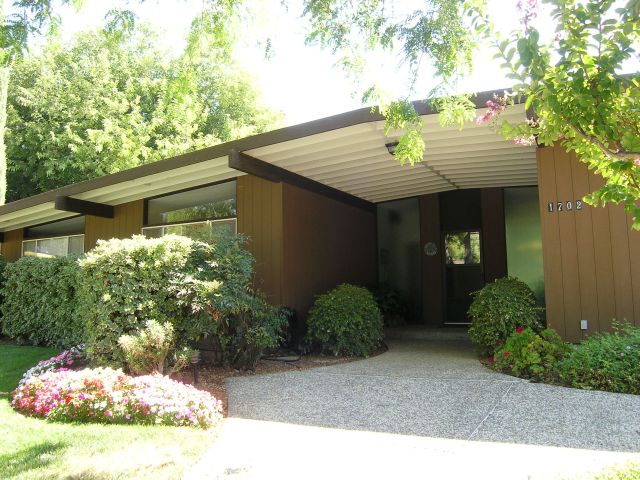 |
|
|
It’s one thing to drive through University Estates, a lovely collection of mid-century modern homes and ranch homes in the bike-friendly town of Davis and think, “Why, this neighborhood really looks much like it did when the Streng Brothers built it."
It’s quite another to do what architectural historian Kara Brunzell has done – look carefully at each house there, as well as other structures, to determine which have retained historic looks and which have not?
And why.
The result is a fascinating document that has been prepared for the city of Davis. It may be used to determine whether this collection of some 500 homes might qualify as historic under national, state, or local jurisdiction.
The short answer, according to architect and Streng homeowner Allen Lowry, who is one of the individuals behind the push for historic recognition, is yes.
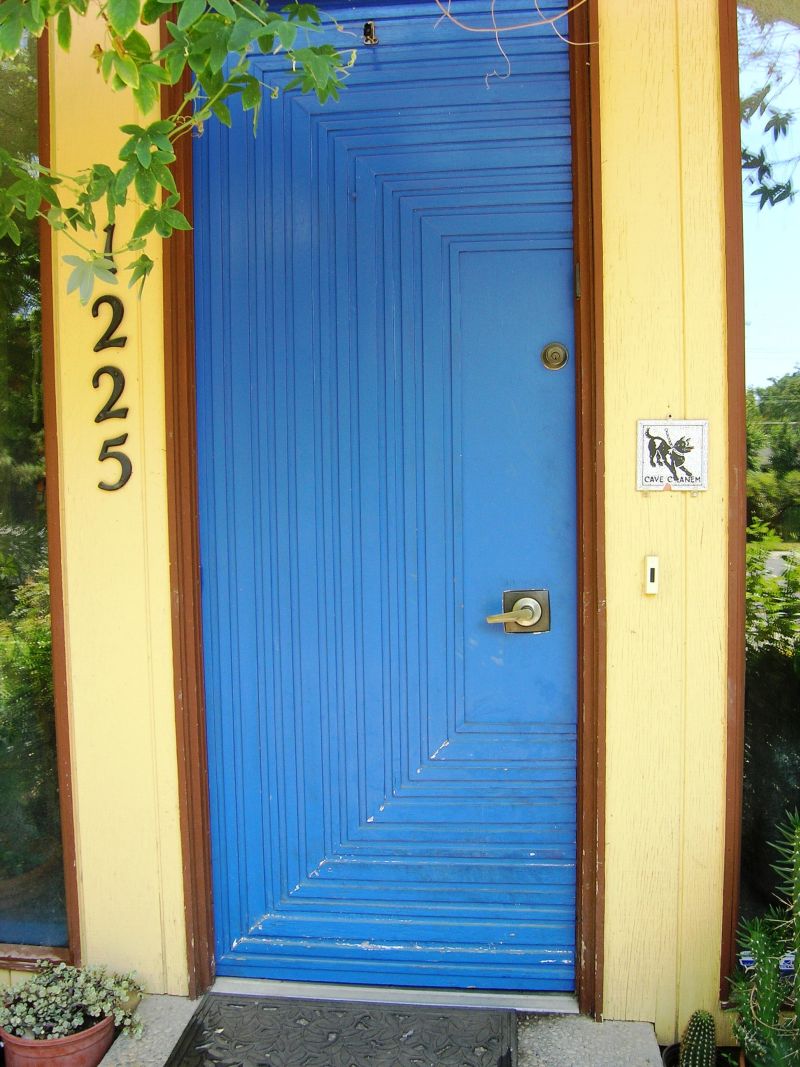 |
|
|
“Kara Brunzell and I have settled on a list of over 400 contributors to this neighborhood, with a high percentage (more than 80 percentage) of intact houses,” Lowry writes.
In historic preservation parlance, a “contributor” is an intact building that contributes to the neighborhood being considered historic. A “non-contributor” is one that has lost its historic looks.
Brunzell writes in the report of the historical importance of the Streng Brothers, Jim and Bill: “The neighborhood is an excellent example of the Streng Brothers’ subdivisions. Caltrans has identified Streng Brothers as among the nine most important developers of residential subdivisions in California during the post-war period.”
She writes: “The University Estates neighborhood appears eligible for listing as a historic district on the National Register of Historic Places, the California Register of Historical Resources, and on the City of Davis’s inventory of historical resources. Aspects of the neighborhood’s development were groundbreaking in Davis history, and many of its houses are architecturally significant examples of contemporary architecture.”
Brunzell’s detailed report is a model of its kind. Anyone who lives in a neighborhood of mid-century modern homes and is wondering – how can we go about getting historic status here? – would do well to read it.
The report, which was turned into the city by Brunzell in late August, is apparently not yet available online. Once the city moves forward with discussion of a potential historic district, the report will be available.
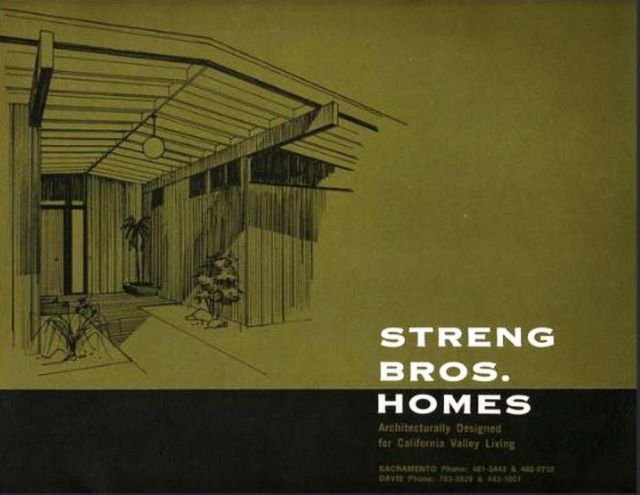 |
|
|
University Estates, built in 12 phases between 1964 and 1975 by Jim and Bill Streng, is in the northwestern area of Davis. The city is considering making it a local historic resource. Lowry would like to see it became a state historic district and be added as a district to the National Register. Both Streng Brothers support the historic designation.
The result could be special city rules to preserve the architecture.
Ike Njoku, Davis's planner and historical resources manager, says the city has yet to act on the report. "However, I anticipate that early next year we would be proceeding with the discussions pursuant to designation process outlined in our municipal code," he says.
Kara Brunzell notes that whenever talk turns to historic districts, some people shiver – needlessly, she believes.
“There really is no downside to a historic district to homeowners unless they want to build a skyscraper or a garbage dump,” she says. “But a lot of people don’t understand that.”
The architect of all the Streng University estate homes was the late Carter Sparks, one of the most prolific mid-century modernist architects in the Sacramento Valley.
According to the report:
“A majority of houses and duplexes in the neighborhood retain a high degree of integrity, although some have been heavily altered. Examples of radical remodels include the addition of projecting bay windows, conversion of carports or garages to dwelling space, entryways remodeled in inappropriate historicist styles, and alterations to roof pitch.
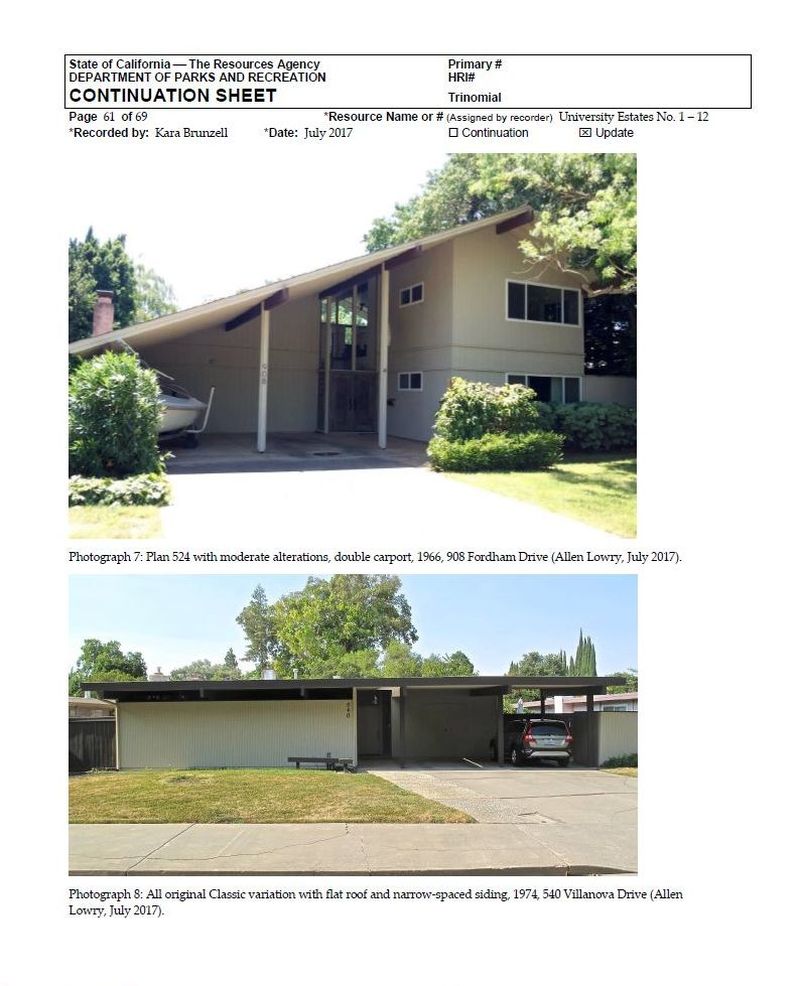 |
|
|
“A number of [Carter Sparks] classics have had windows or doors added to original blank façades for egress. However, this has often been performed quite sympathetically, particularly when new windows or doors are installed on side elevations.
“Other modifications are examples of the inevitable changes all properties experience over time, and can be considered minor alterations that do not degrade integrity. These include in-kind replacement of windows, doors, and other materials; replacement of tar-and-gravel or shake roofs with composition shingle; and trimming weathered projecting beams.”
Brunzell’s report makes clear how savvy the Strengs were, as businessmen, in mixing the more traditional homes with their mid-century moderns:
“The Strengs’ flexibility and creativity in response to market forces allowed them to sell popular Ranch houses to effectively subsidize the Modernism they loved but knew did not appeal to all buyers. This practice, which appears to have been unique to Streng Brothers, allowed them to build hundreds of contemporary houses in Davis, which as a relatively small town did not have the population density required to create a market for the all-contemporary subdivisions constructed in urban areas during this period.”
The home-by-home survey shows that even homes that have had some changes can still count as historic. These include such changes as “aluminum garage door not original, vinyl windows,” and “carport filled in as garage, modified,” and “added plaster finish, modified windows and front door.”
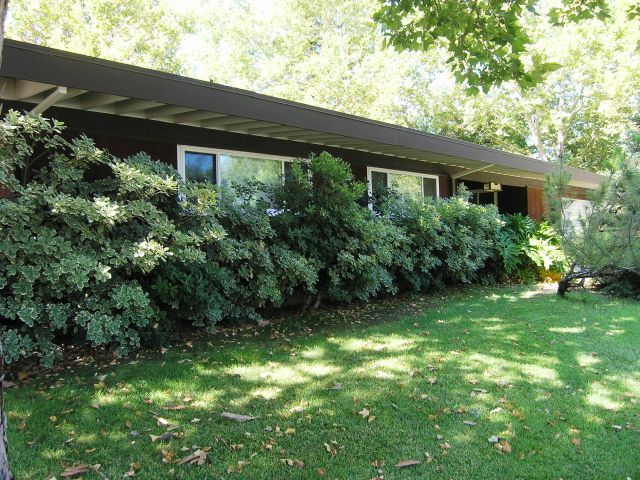 |
|
|
Homes that are too far gone to contribute show such changes as “heavily modified, second story addition, windows/fenestration pattern altered,” and “highly modified, second story and fantasy entryway added.”
Brunzell’s report makes clear that the neighborhood remains popular for, among other reasons, its innovative architecture.
“Although a number of houses were remodeled with ‘traditional’ historicist details in the 1980s, recent renovations have more often resulted in preservation or restoration of the Modernist aesthetic,” she writes. “Many current residents point to the good schools and proximity to UC Davis as the most appealing aspects of the neighborhood, downplaying the architecture.
“Others praise the functionalism of the houses, citing passive solar design, connection between indoors and out, and well-designed storage. While property owners’ motivations for preserving design features may vary, the neighborhood overall has a strong concentration of houses that retain original architectural characteristics.”
- ‹ previous
- 545 of 677
- next ›



